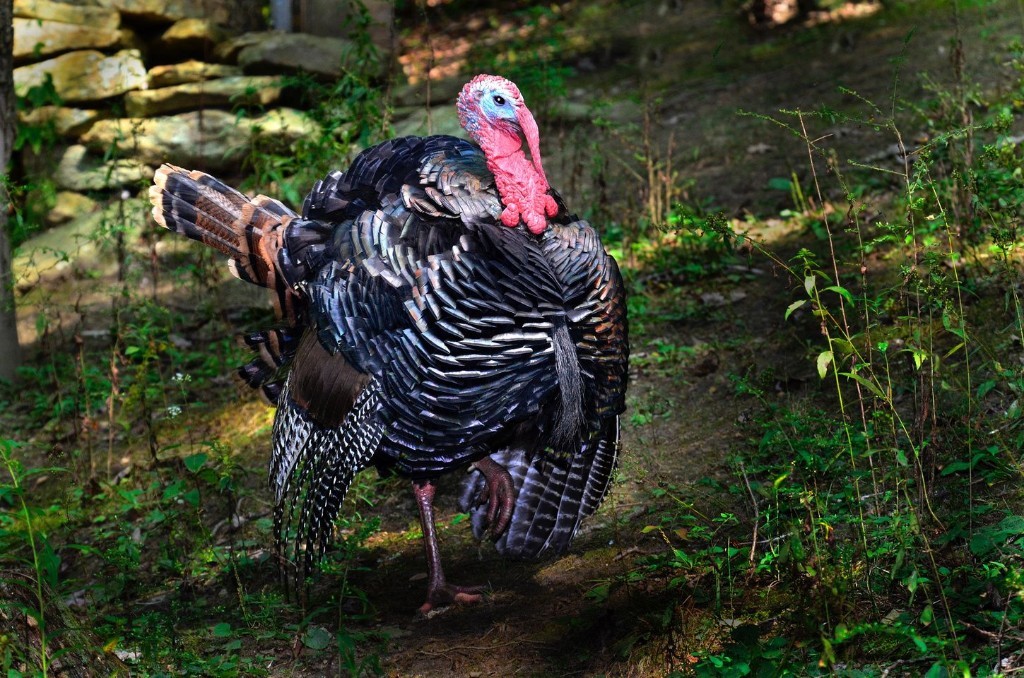COMMENTARY BY DAVE SAMUEL
Turkeys are a mainstay for Thanksgiving, but quite a few West Virginians ignored the store bought variety and ate wild turkey this past Thursday. I say that because the West Virginia spring turkey harvest was 11,210 birds, with 263 harvested in Monongalia County, 455 in Preston and 298 in Marion.
Most of us see wild turkeys at some point during the year, either driving around or just looking out our front windows. Turkeys are everywhere. But that wasn’t always the case. In 1921, the statewide turkey harvest was 105 birds, and an estimate made in 1945 showed only 6,000 birds for the entire state.
After the Civil War, logging and clearing land almost eliminated wild turkeys from West Virginia, though we still had some in the eastern part of the state.
I grew up in Pennsylvania and remember the wildlife agency game farms where turkeys were raised and released in the wild. Of course, the idea was that such birds would then reproduce and the turkey population would grow.
That didn’t happen. Those farm birds just didn’t survive in the wild.
West Virginia also raised birds for release at the French Creek Game Farm, now known as the West Virginia Wildlife Center. Those releases were no more successful than other states, but we had an ace in the hole. His name was Wayne Bailey, a biologist who started working for the wildlife agency in 1945. Bailey was a unique man — a turkey hunter — and his ideas would lead the country in bringing back the wild turkey.
In the early 1950s, most counties had no turkeys, so Bailey went to the eastern part of the state, trapped wild birds and stocked them where we had none. Of course, the hunters in those eastern counties were upset that some of “their” birds were taken away, but slowly turkey numbers increased. In 1950, Bailey put six birds in Coopers Rock State Forest and nine in the Bluestone Wildlife Management Area. Surveys were done to see how those two stockings went and after several years, broods were seen and the stockings were judged to be successful. Yes, the birds you now see can probably be traced back to six birds.
Initially, Bailey’s stockings were small, but in the early 70s, Wayne started capturing whole flocks at one time with cannon nets. These were 30-by-50-foot nets that were propelled by rocket mortars. These nets revolutionized the capturing of wild turkeys, and Bailey’s innovations and efforts brought turkeys back to the entire eastern United States. Once he and his crews established turkey populations in all 55 counties, he retired and then went to work for the state wildlife agency in North Carolina where he did the same for its turkeys.
Once we had lots of birds, we shared ours to join with the first wild birds ever released in Ohio, Illinois, Massachusetts and New Hampshire. Other turkey biologists would follow Bailey in West Virginia. James Pack worked for the DNR out of Elkins and Bill Healy worked for the U. S. Forest Service out of Morgantown, and both were giants in the study of wild turkeys. In fact, when one attended national turkey meetings, as I did often as a wildlife professor, it was a given that the experts — the biologists who led the nation in one of the great wildlife success stories — came from West Virginia. If one constructed a monument to honor the recovery of wild turkeys in this country, the names R. Wayne Bailey, James Pack and Dr. William Healey would be on there.
The recovery of the wild turkey and the large numbers we now have in West Virginia have impacted other species, such as the bobcat, which thrives at least in part on a turkey diet. Turkeys can do some crop damage, but, in general, they just provide another wildlife positive for hunters and non-hunters. Come March, when you see gobblers spreading their tails and courting females along West Run Road, near the airport or one of a hundred other localities, just say thanks to Bailey and those that followed. The birds are back and neat to see, hear and eat. Could you pass me a drumstick, please?
Dr. Samuel is a retired wildlife professor from West Virginia University. His outdoor columns have appeared, and continue, in Bowhunter magazine and the Whitetail Journal. If you have questions or comments on wildlife and conservation issues, email him at drdave4@comcast.net.




